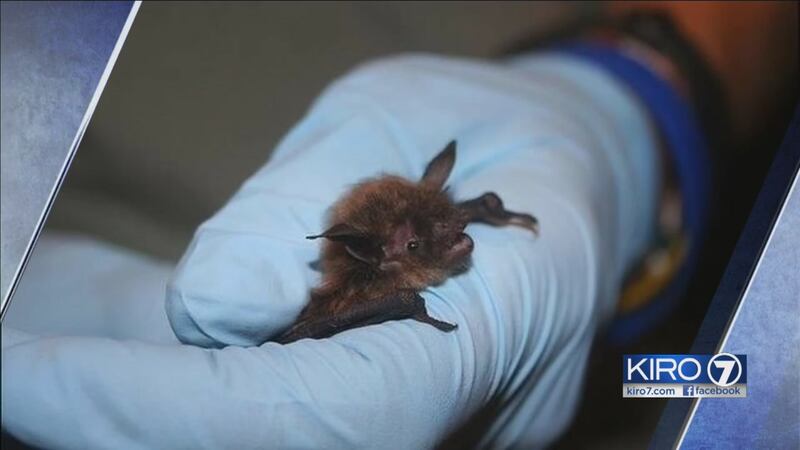Scientists at the Washington Public Health Laboratory in Shoreline are responsible for testing 200-300 bats each year. Last month, four bats tested positive for rabies. The last time the lab had that many positive results was 1998.
Epidemiologists are warning people to be careful and to be sure to report any interactions with bats.
"There are many different things we consider exposure.
Bat teeth are very sharp and small and so people might not know they've been bit.
So we look at any contact at all with a bat as well as sleep exposure. If you wake up and find a bat in your bedroom, or a child unattended with a bat, we would be concerned about those interactions as possible exposures," said Hanna Oltean, a zoonotic disease epidemiologist at the Washington State Department of Health. "Rabies is considered invariably fatal so, if an exposure occurs, and the rabies virus is transmitted to a person, you will die without medicine."
KIRO-7 talked to a mother in Olympia who had a bat in her house last month.
Her son found the bat hiding in a light fixture in the bathroom. It had been in the house overnight as the family of six slept.
"Because rabies is 100 percent fatal, the thought that one of my kids could have been exposed to that is very scary," said Fawn Cobler.
Scroll down to continue reading
More news from KIRO 7
- More than 35 people arrested in major drug bust in Washington state
- Common toothpaste ingredient may promote gut inflammation, colon cancer
- Many Washington teens are missing, vulnerable to sex trafficking
- Florida man fatally stabbed for eating roommate's groceries, police say
- Man arrested after SUV explosion in Federal Way
She had all six members of her family go to urgent care to get the rabies vaccine. She called animal control to look for the bat. It was captured later that day and then sent to the state lab to be tested.
It turned out the bat was not rabid, so the family was able to stop the rabies shots.
KIRO-7 went inside the state lab on Wednesday to watch a scientist through a glass window as she tested a bat for rabies. She wore protective gear to prevent exposure.
"We can create a slide, a microscope slide, and with some staining techniques, we can take that onto the microscope and identify the virus in that sample," said Ailyn Perez-Osorio, supervisor of the Virology and Molecular Laboratory at the Washington Public Health Laboratory.
She said a positive test would show bright green on the slide.
"Something that's concerning us is: We've had more rabies positive bats this May since 1998. It's an unusually high number of rabid bats for us this time of year," said Oltean.
She doesn't know what is causing the increase, but said it could be the warmer weather.
Rabid bats are more likely to be out during the day. You don't need a bat to bite you to be at risk for rabies.
A rabid bat bit a UW student last month near Husky Stadium.
"This bat flew up next to them and he was going to move the bat or something and the bat just latched on and started biting his hand," said Mason Fagan, a fraternity brother of the student.
The victim took the bat back to the fraternity, so everyone exposed to the bat was treated to prevent rabies.
If you find a bat where it shouldn't be, contact your local health department.
"Never attempt to kill a bat on your own. It should only be done with appropriate instructions, with appropriate training," said Oltean.
Epidemiologists say the best thing to do is to call animal control to catch the bat and carefully euthanize it. The brain needs to be intact to be able to test it.
Anyone who does plan to try to catch a bat should wear as much protective clothing as possible, use a tennis racket and try to get the bat into a box or a bucket with a lid, said Oltean.
"Recognize that rabies is very rare, even if contact has occurred. Transmission is also rare," said Oltean. The last time anyone died from rabies in Washington was 1997, and before that, 1995.
She recommends that people be very cautious around bats and other wild mammals that could have been exposed to rabies.
Cox Media Group








